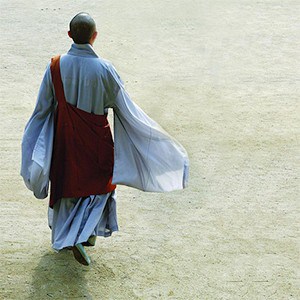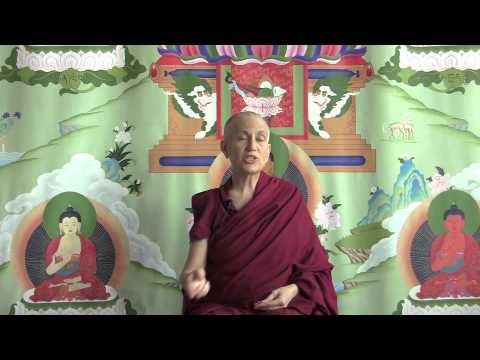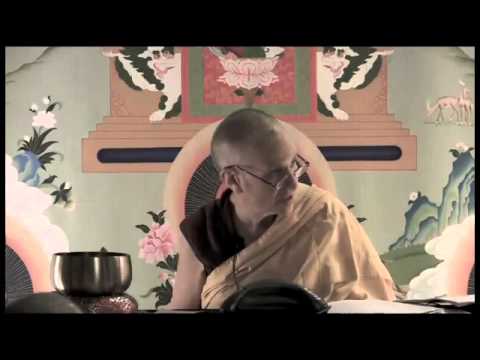Siksamana and bhikshuni ordinations
Questions and answers

Q. Before taking bhikshuni ordination, must one have first taken sramanerika ordination? Before siksamana ordination, must one have first taken sramanerika ordination?
A. Yes, sramanerika (getsulma) or novice ordination is required before taking either siksamana or bhikshuni ordination. Sramanerika consists of ten precepts that are subdivided into thirty-six precepts in the Tibetan tradition.
Q. Before taking bhikshuni ordination, must one have first taken siksamana ordination?
A. Technically speaking, yes. However, there are a few temples in Taiwan that will give bhikshuni ordination to women who have been sramanerikas for a number of years without their having first kept the siksamana ordination for two years. Siksamana is a probationary or training ordination taken after sramanerika ordination.
Q. How and where is it possible for a sramanerika in the Tibetan tradition to receive the siksamana ordination?
A. A bhikshuni sangha gives the siksamana ordination. You can request to receive it in a Chinese temple in Taiwan. I do not know if the siksamana ordination is given in Vietnamese temples. Siksamana ordination is also given at Sravasti Abbey, but only to people who train at the Abbey. Since the purpose of taking the siksamana ordination is to prepare for bhikshuni ordination, it is important to live with or near a bhikshuni sangha during the two years of siksamana training. If this isn’t possible, then stay with your Dharma teacher at a Dharma center where you can receive teachings on Vinaya and Dharma and have the support of fellow practitioners.
It can be difficult finding out which Chinese temples give siksamana ordination and when they give it. Please contact Ven. Heng-ching Shih regarding this. She may also know what temples are giving bhikshuni ordination without requiring siksamana ordination. I really encourage Western nuns to stay in a nuns’ community and receive proper training in the siksamana and bhikshuni precepts. If one lives by oneself, it is extremely difficult to keep these precepts, in which case the purpose of taking them is lost.
I do not know of any temples or monasteries in Europe giving the siksamana and/or bhikshuni ordinations. There may be some, but since I live in the US, I am not familiar with them.
Q. What are the commitments of being a siksamana?
In the Dharmaguptaka Vinaya practiced in Taiwan, Vietnam, Korea and China and in the Pali Vinaya practiced in south and southeast Asia, it consists of six precepts. In the Mulasarvastivada Vinaya practiced in the Tibetan and Himalayan communities, it consists of twelve precepts.
Keeping this ordination for two years before taking bhikshuni ordination gives one the opportunity to practice the bhikshuni precepts without having taken all of them.
Q. I heard that more research is being done regarding the possibility of taking bhikshuni ordination in the Tibetan Mulasarvastivada tradition. Can you give me more information about this?
A. From mid-August to mid-November, 2013, under the authority of the Central Tibetan Administration’s Department of Religion and Culture, a group of ten monks (two from each of the four Tibetan traditions and two representing the nuns) met to do intense research on bhikshuni ordination. Seeing that Tibetan Vinaya commentaries had a diversity of ideas regarding bhikshuni ordination, they decided to confine their research to the original Indian sources: the Vinaya itself and the great Indian commentaries on Vinaya. They prepared a 220 plus page report, but I do not know if it has been published or what the findings were. I also do not know the process for making a final decision, but it surely will be a group of respected Tibetan monks. His Holiness the Dalai Lama has repeatedly said that he, as an individual, does not have the power to make this decision. In any case, it will still be some time before a decision is made, as the lamas, geshes, khenpos, and rinpoches will need to study and discuss the research document.
For more information on bhikshuni ordination, please see the website of the Committee for Bhiksuni Ordination.
Venerable Thubten Chodron
Venerable Chodron emphasizes the practical application of Buddha’s teachings in our daily lives and is especially skilled at explaining them in ways easily understood and practiced by Westerners. She is well known for her warm, humorous, and lucid teachings. She was ordained as a Buddhist nun in 1977 by Kyabje Ling Rinpoche in Dharamsala, India, and in 1986 she received bhikshuni (full) ordination in Taiwan. Read her full bio.


